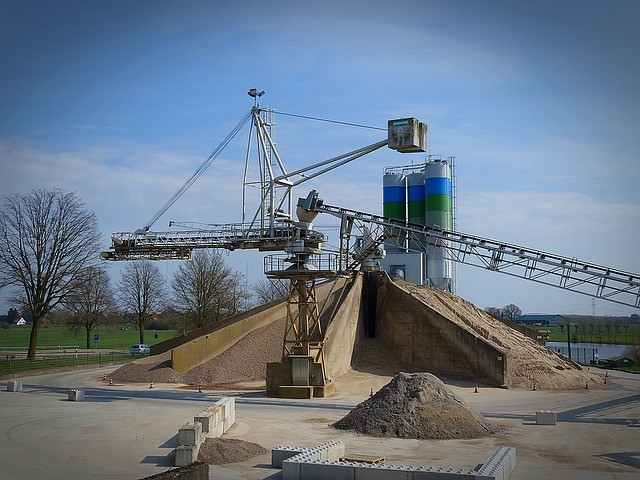What is Bulk Material Handling?
04-12-19

Bulk Material Handling
Dry materials, in bulk, need to be managed in a way that keeps the materials in good shape without too much wear and tear on the machines that handle them. Figuring out the design of this equipment and how it should work is what we call bulk material handling.
Most businesses want to maximize their resources, so they can spend the least amount of money to make the most of their products. At the same time, organizations dealing with bulk materials have concerns with safety, reliability, performance, and efficiency. Companies cannot sacrifice any of these areas to get things moving faster to save money, because in the end, cutting corners will ultimately lead to more problems. The first step in making the most of bulk material handling systems and meeting any challenges is to fully understand the characteristics of the materials with which you are working.
Whether working directly with materials like minerals, chemicals, grain, food items like sugar or flour, or within an industry that processes bulk ingredients like paper or textiles, there are specific concerns about how these materials are best handled. Things like weight, moisture content, abrasiveness, and the sizes of the small particles impact bulk material handling decisions. Bulk materials can range from dusty powders, to sticky materials. They all need to be processed and managed appropriately, but what that looks like is very different depending on the material and the facility’s machinery.
The machinery or equipment itself is the next important piece in overcoming bulk material handling challenges. It has to be made to last, reducing the potential for problems as even the smallest hiccup can build up to something catastrophic when you are dealing with bulk materials and finicky equipment.
There are a lot of parts that go into bulk material handling, from conveyor belts to hoppers, to loaders, and of course, valves. They all work together to supply and transport bulk materials for processing, storage, blending, or other purposes. If one part fails, it can slow the entire process down, or bring it to a complete halt. Common issues include inconsistent flow of materials or other flow difficulties, mechanical stress, blocked lines, and valve failures.
Your facility will require the right equipment — not just the technology itself, but its size and scale and its layout. It has to have the right capacity for the materials you are handling, and if you are working with materials that require stockpiling or storage, you will need room for that, too.
That being said, a lot of people who work with bulk material handling systems focus on the big picture of the entire engineering project, versus looking at the details that can make a big difference. Sometimes investing in high quality, smaller parts, like bulk material valves, is actually more impactful than overhauling an entire facility.
Bulk Material Valves
Understanding the components of bulk material handling systems is important if you are trying to troubleshoot problems, or improve your existing setup.
In bulk material handling, valves are generally used to feed dry bulk materials into the conveyer belt or other similar system. These valves can be used to shut off, meter, or divert the materials. They play an important part, and are used heavily and frequently. All of that use, when a system is working with valves that are sub-par, can create a bottleneck owing to broken or failing parts.
Our bulk material valves can drastically reduce issues with frequent repair and replacement, reducing your maintenance costs and improving business uptime. That’s because our bulk material valves are made for the toughest of situations, whether it is discharge, vent, and filling applications, transfer lines, dust collectors, or other tricky scenarios that can leave other, less robust valves failing.
Installed in a Y fitting, these valves work as a diverter that can also be a mixer, or be used to stop material flow. You can get a lot out of our valves, which feature a self-lapping action that renews and polishes the metal seating surfaces while it is in use. That means that while your valves are diverting, mixing, metering, or stopping materials, they are essentially wearing themselves in to work well, versus wearing themselves out only to fail and bring down your entire bulk material handling system. It’s a win-win situation for any facility working with bulk materials, in any industry and on any scale.
Our bulk material handling valves are well suited to various systems, available in numerous sizes, constructions, and connections with optional accessories. They are all built to withstand temperatures up to 750°F, and vacuum to 100 psig. In other words, if you want something tough for bulk material handling, and something that’s going to stick around for a long time, we have what you need.